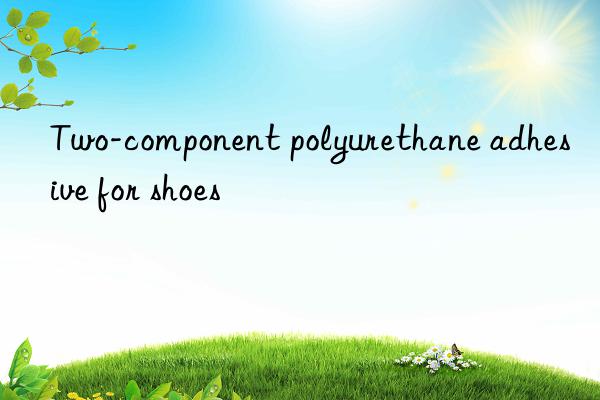
In the past, my country's shoemaking industry mainly used neoprene rubber Adhesive, chloroprene adhesive has good initial viscosity, can be cold-bonded, and is cheap. However, it is not resistant to plasticizer penetration and is not suitable for soft PVC, thermoplastic rubber, and PU leather. Materials used in shoes have poor adhesion, and the benzene solvent that must be used is a highly toxic solvent, which is a fatal weakness. At present, most shoe glues at home and abroad have been replaced by polyurethane adhesives. Polyurethane adhesive has good adhesion to various shoe materials such as PVC, PU, rubber, TPR, EVA, nylon, and leather.
Polyurethane adhesive for shoes, like other polyurethane adhesives, has excellent low-temperature properties, lower curing temperature, excellent flexibility, impact resistance, wettability and adhesion to many materials. Therefore, it is often used in situations requiring normal temperature, rapid curing and flexibility, and is especially suitable for bonding dissimilar materials with different expansion coefficients.
Polyurethane adhesives for shoes are mainly solvent-based two-component polyurethane adhesives. The main agent of this adhesive is a solution of thermoplastic polyurethane. It is characterized by high viscosity and low solid content. It crystallizes and solidifies quickly after the solvent evaporates. , high initial adhesion, suitable for cold bonding process of shoe materials. Can be used as one-component solvent-based polyurethane adhesive (introduced in the section on one-component polyurethane adhesives). However, in order to improve the durability of bonding, as shoe glue, it is usually necessary to add a small amount of polyisocyanate cross-linking agent as a curing agent to form a two-component adhesive system. The curing agent can significantly improve the bonding performance of the adhesive, with moderate heat resistance, sufficient water resistance and bonding durability. This two-component solvent-based polyurethane adhesive has sufficient bonding strength for dissimilar materials and materials with different crystallinity. The amount of polyurethane adhesive for shoes is about half that of neoprene.
The preparation of solvent-based two-component polyurethane adhesive for shoes focuses on the synthesis of component A, the main agent. The main components of the main agent are crystalline polyester diol andMDI. Adhesive TPU. This has been introduced in the section on volatile types of single-component solvents and will not be repeated here.
Thermoplastic polyurethane crystallizes quickly, so the formulated adhesive has high initial bonding strength. When preparing the glue, you should strictly select the appropriate solvent. The first consideration is the solubility of the polyurethane glue particles in the solvent and the volatility of the solvent itself. Solubility can be determined based on the principle of similar solubility parameters. The evaporation rate of the solvent must be appropriate and depends on the gluing process. The solvents used in component A of polyurethane adhesive for shoes are generally ethyl acetate, toluene, methyl ethyl ketone, etc. Mixed solvents are usually used.
Regarding the solid content in the glue, domestic manufacturers of polyurethane adhesives for shoes generally control it at around 15%, and foreign manufacturers generally control it at around 18%. The non-volatile component of the glue is mainly polyurethane elastomer, and there may also be other additives. For example, the formula recommended by Bayer Company in Germany: a mixed solvent composed of 17 parts of thermoplastic polyurethane Desmocoll 540 rubber particles, 1 part of fumed silica, 65 parts of acetone and 17 parts of ethyl acetate.
The viscosity of polyurethane adhesive (component A) for shoes is generally 1200~2000mPa·s.
The curing agent of polyurethane adhesive for shoes can use polyisocyanate cross-linking agents such as JQ-1 glue, JQ-4 glue, 7900 glue, etc. These contents have been included in the single group Introduced in the Polyisocyanate Adhesives section of the Moisture-Cure Polyurethane Adhesives section.
The dosage of curing agent is usually 3% to 10% of the main agent. For example, for 100 parts of the main agent polyurethane glue, the dosage of cross-linking agent is 3 to 10 parts. When used with adhesives, the glue preparation needs to be tested on the amount of curing agent and the pot life after compounding to determine the appropriate amount of curing agent.

 微信扫一扫打赏
微信扫一扫打赏

